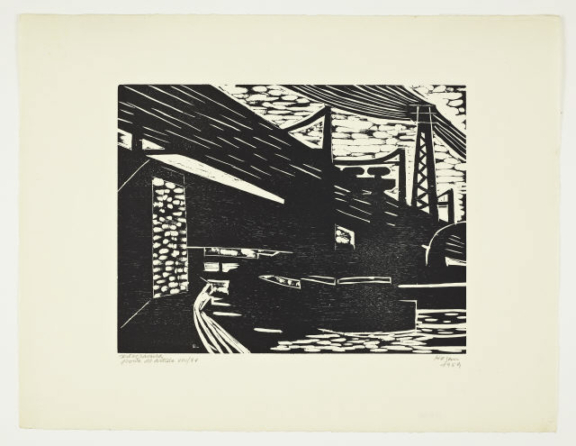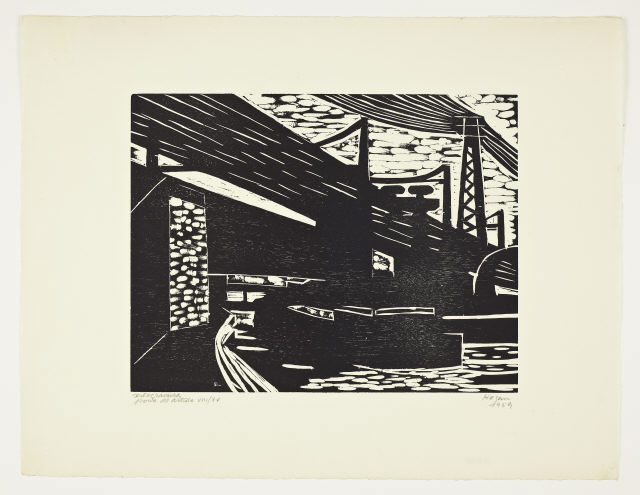
- 1959
- Paper
- Woodcut
- Inv. GP66
João Navarro Hogan
Canal de Saint-Denis
The prints GP8, GP13, GP33, GP42, GP66 and GP1055, whose theme is landscapes, were the first prints by João Hogan to be produced and commercialised, between 1957 and 1960, by the Cooperative Society of Portuguese Printmakers. Made using the woodcut technique, a relief printmaking process in which wood is used as the matrix, these black and white prints by João Hogan have occasional touches of colour (GP8, GP13 and GP42). Black, which covers large areas of the compositions, is obtained through the application of ink to the matrix; white, on the other hand, is free from ink and takes on only the colour of the paper. Thus black corresponds to the unmodified matrix whilst white corresponds to the areas gouged out from the wood. Exploring the specific qualities of the technique, the artist makes use of the nature of the matrix, incorporating the wood grain into the composition itself and allowing this to be seen in the prints.
Expressionist in style, these woodcuts are dense with the overlapping of planes, in a constant interplay of contrasting light and dark. Hogan introduces architectural elements (houses and bridges) to the deserted landscapes he has constructed, creating a group of volumes which are simplified yet robust. These volumes are described through a series of white spaces which create, through subtle interplay, rhythms within the compositions. The last of these work, Chuva [Rain], stands out from the former due to the dominating presence of two human silhouettes that merge with the landscape, in a simplified composition reinforced by the semicircular outline of the umbrellas.
Hogan focuses on landscapes immersed in shadow and enveloped in solitude, favouring nocturnal environments and creating scenes with great dramatic force.
IG
October 2011
Reviewed by GV, October 2012
| Type | Value | Unit | Section |
| Width | 52,5 | cm | |
| Height | 40,2 | cm | |
| Height | 26 | cm | |
| Width | 34,2 | cm |
| Type | Acquisition |
